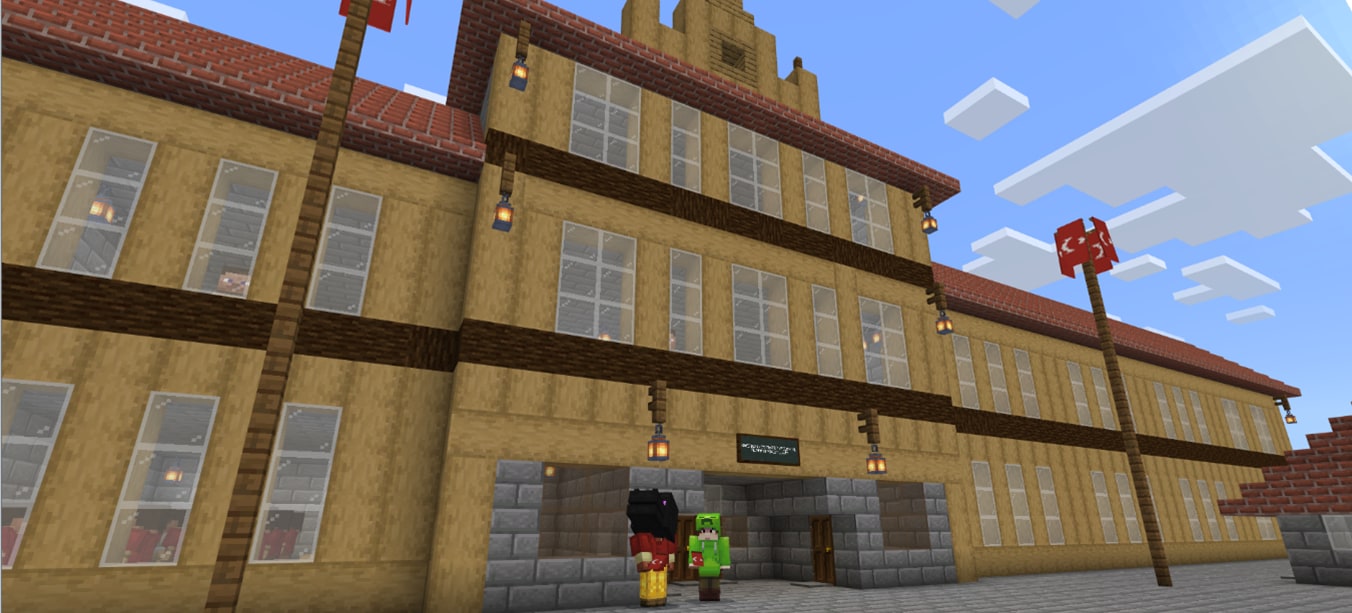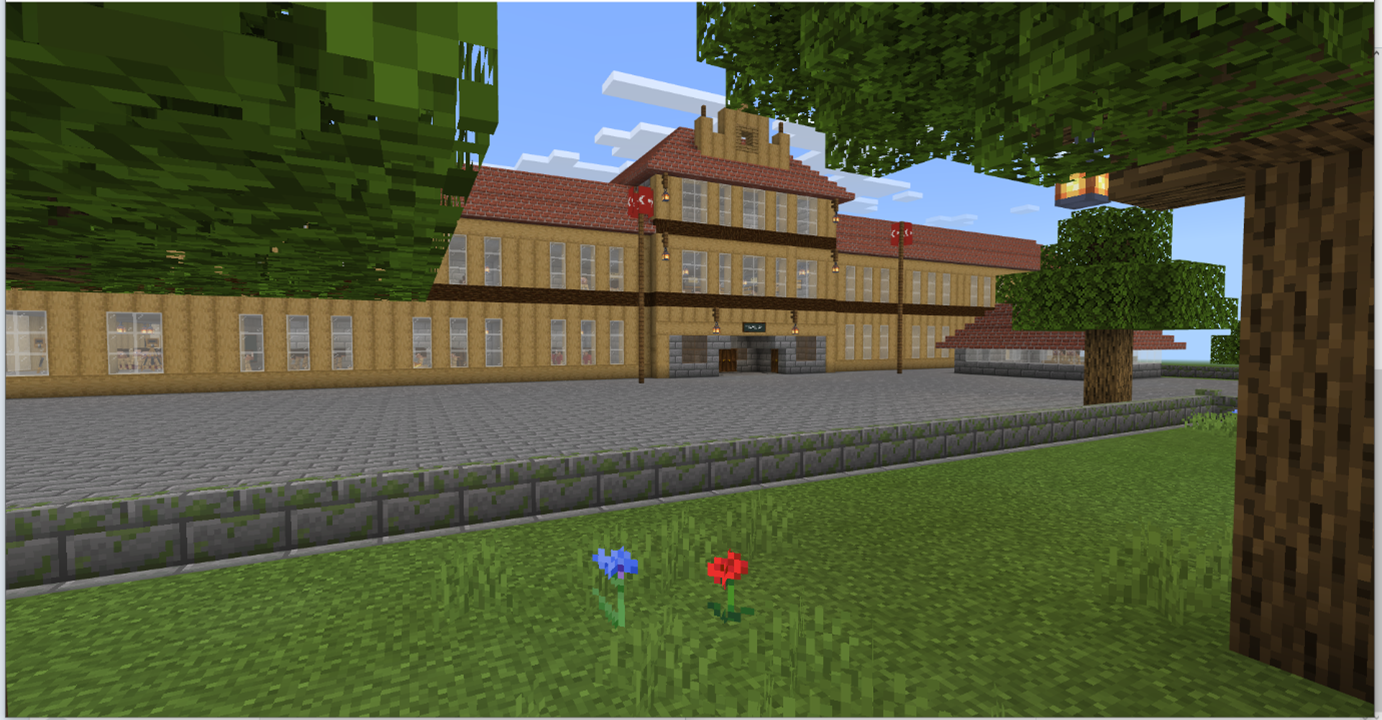Creating spaces for computer science and SEL in Turkey
18 Nov 2021

18 Nov 2021

We all understand the positive impact of maintaining a connected community both at school and at home. It can make all the difference for a student's academic success, mental health, and well-being. As a result, schools everywhere are increasingly integrating social-emotional learning (SEL) into the K–12 curriculum. More and more, educators are recognizing its importance for supporting resilience, managing anxiety, and generating skills like collaboration, problem-solving, and communication. One such educator in Turkey shares how his school community supported a sense of connection during remote learning, where students explored coding and cooperation in a virtual setting. Read Cumhur Torun's story in this guest blog, then explore Minecraft: Education Edition esports programs, build challenge opportunities, and social-emotional learning resources that support well-being and connections between your students.
Our school is one of the most established vocational and technical high schools in Turkey, going back 151 years. Construction of the main facility on our campus began in 1912 and was completed in 1916. The building was made using stone blocks, so it was called the "Stone School" or "Taşmektep" in Turkish.
When COVID-19 hit our community, we switched to remote teaching and learning. Just like the rest of the world, we were unprepared for this new kind of instruction. Since it was an unprecedented situation, putting online classes into practice had to take place under extraordinary circumstances. After all, educators weren't equipped to address this new way of teaching and learning during the pandemic.
Our Ministry of Education landed a comprehensive professional development initiative designed to ready educators for adopting educational technologies effectively in a remote setting using a plethora of interactive platforms that foster social-emotional learning. Minecraft: Education Edition was one of them.
I had never used a learning tool like Minecraft: Education Edition before. My only exposure to Minecraft was as a parent watching my kids play and construct things using different blocks. When I heard that Microsoft was launching a free professional development session with Minecraft: Education Edition as part of a pilot with the Ministry of Education, I thought there was an opportunity to use a tool my students loved as an effective game-based learning platform to land my content. The deeper my professional development efforts went, the more I was drawn into the world of Minecraft.
This platform enables me to teach abstract concepts that are difficult to address in my classroom. Using blocks in Minecraft, I can actively construct learning outcomes. I was even able to use Python for my coding class.

My students got started with programming through the Python 101 lessons. They learned syntax, variables, loops, and decision control structures by traveling and having fun in the Minecraft world. When they struggled, they supported each other. Students who were using Minecraft for the first time adapted quickly despite some initial difficulties, and they ended up being very successful.
Normally, when I was teaching computer science, I would first explain the programming environment and syntax. Students would get bored because these topics included theoretical information. However, within the game world of Minecraft, they were always active and having fun as I explained these challenging topics. After Python 101, they applied what they learned by completing the Python Islands lessons—time-traveling through the ages of humanity on floating islands in space as they accomplished coding tasks.
Using Minecraft: Education Edition, students can complete their coursework individually or collaboratively, learning from each other as they work together. As a true SEL tool, Minecraft promotes peer coaching seamlessly and in an engaging way. Using the game's multiplayer mode, I connect with my students in closed virtual classrooms from the safety of their houses. We come together as a united class to collaborate, learn, and build things through teamwork with text-based programming. This new environment allows pupils to foster creativity and coding skills concurrently.
Several students confided in me that they couldn't understand the English texts in the tasks. Their friends showed them how to translate the texts into Turkish by establishing a remote connection. They even increased their knowledge of the language by coloring the sentence elements differently in English texts!
This collaboration increased my students' feelings of empathy, their desire to help each other, and the pleasure they took in supporting their peers. The helpful atmosphere meant that students wouldn't hesitate to ask for help, and they wouldn't make fun of those who did.
One day, right before I was about to start class, two pupils of mine shared something with me: "It's been a long time away from school, and we really miss it. We miss our classroom, the computer lab, the grounds we play on, and the conversations in the hallways with our peers." So, they rebuilt a replica of our campus at a 1:1 ratio using Python and invited me to join the world. As I navigated their creation, I saw how much my students had missed the school grounds. The classrooms, the cafeteria, the library, the conference hall, the faculty room, the principal's office—they all came back to reality in front of my eyes!

Not only were my students rummaging around the corridors of our main building and having animated private audiences with their peers, but they also toured me through new additions to their reimagined campus. These included a portable pool, a renovated basketball court, and a new soccer field. I'm absolutely thrilled to see the power of Minecraft to unite my students and bridge physical gaps between us during these trying, unprecedented times.
My students also told me how they worked while creating this world. First of all, they built the main structure of the school just how they remembered it. But then they thought they should re-create the building in accordance with the original. For this, they researched the history of the school and searched out old photos on the internet. Thanks to their efforts, they learned more about the school's story.
They shared pictures and explained the information they'd found to their friends in multiplayer games. For example, they discovered that a piano was created in our school in 1904 and sent to the Ottoman imperial palace. They also read that during the War of Independence, metals from the school were melted down, made into bayonets, and sent to the front. By reconstructing the building virtually, they developed Minecraft knowledge alongside an appreciation of the past. In this way, they learned about our rich history and felt an even stronger sense of ownership over their school.
Schools are interactive learning spaces where students connect and learn from each other. Although distance education severely reduced this interaction in person, Minecraft: Education Edition helped restore it and provide students with an immersive environment to build knowledge, relationships, and SEL skills.
***
Cumhur Torun has a bachelor's degree in computer science education from Kocaeli University and holds a master's in computer science from Karabük University. He's currently pursuing a doctorate in materials science and engineering at Kastamonu University, focused on 3D design with Arduino and 3D printers. As an advisor for TÜBİTAK, the Scientific and Technological Research Council of Turkey, Cumhur leads lectures and hands-on workshops for students and fellow computer science teachers.
Find out how Minecraft: Education Edition can help you keep students engaged, exploring, and building connections during remote and hybrid learning. Discover resources for supporting SEL with your students here.